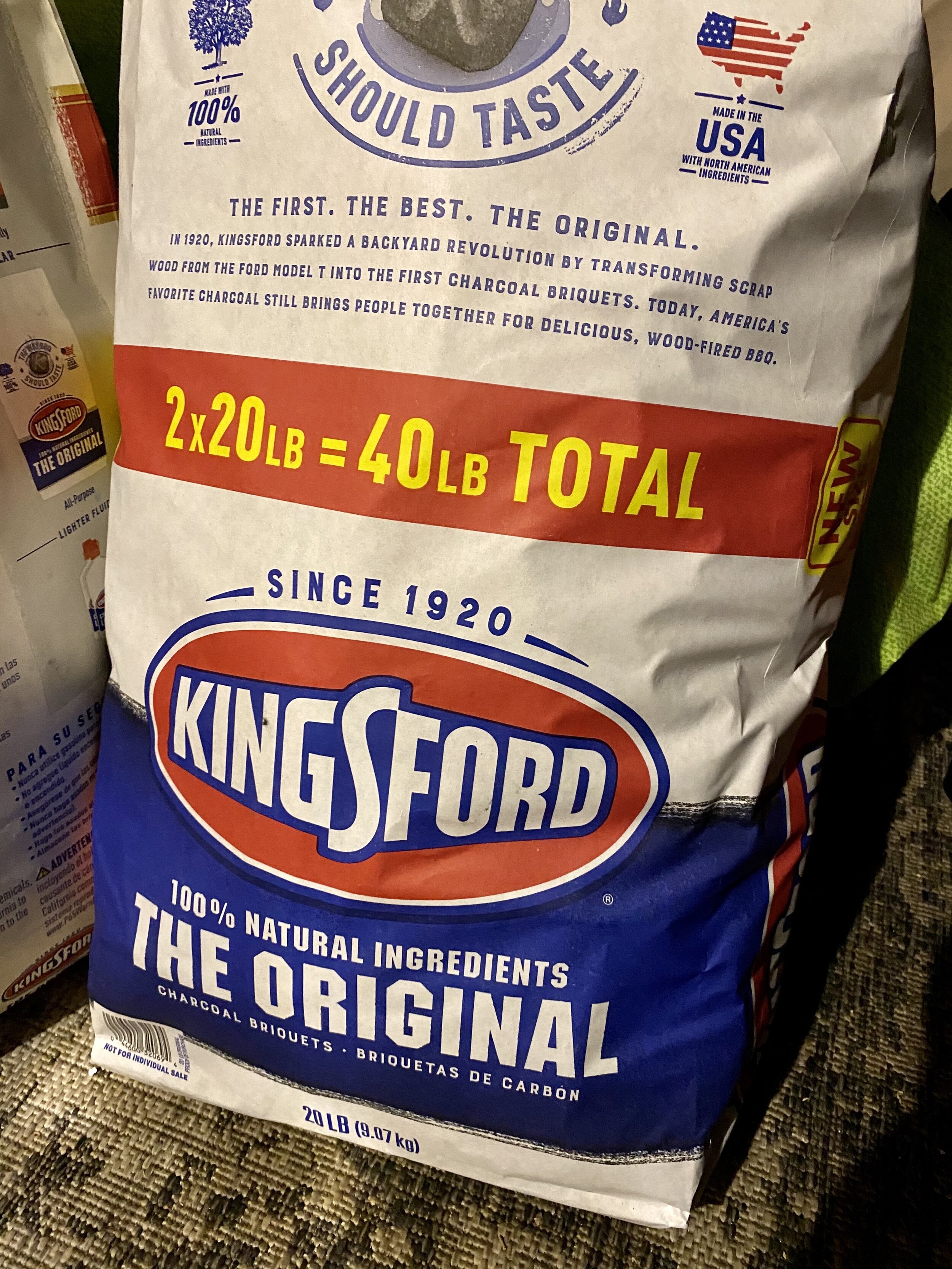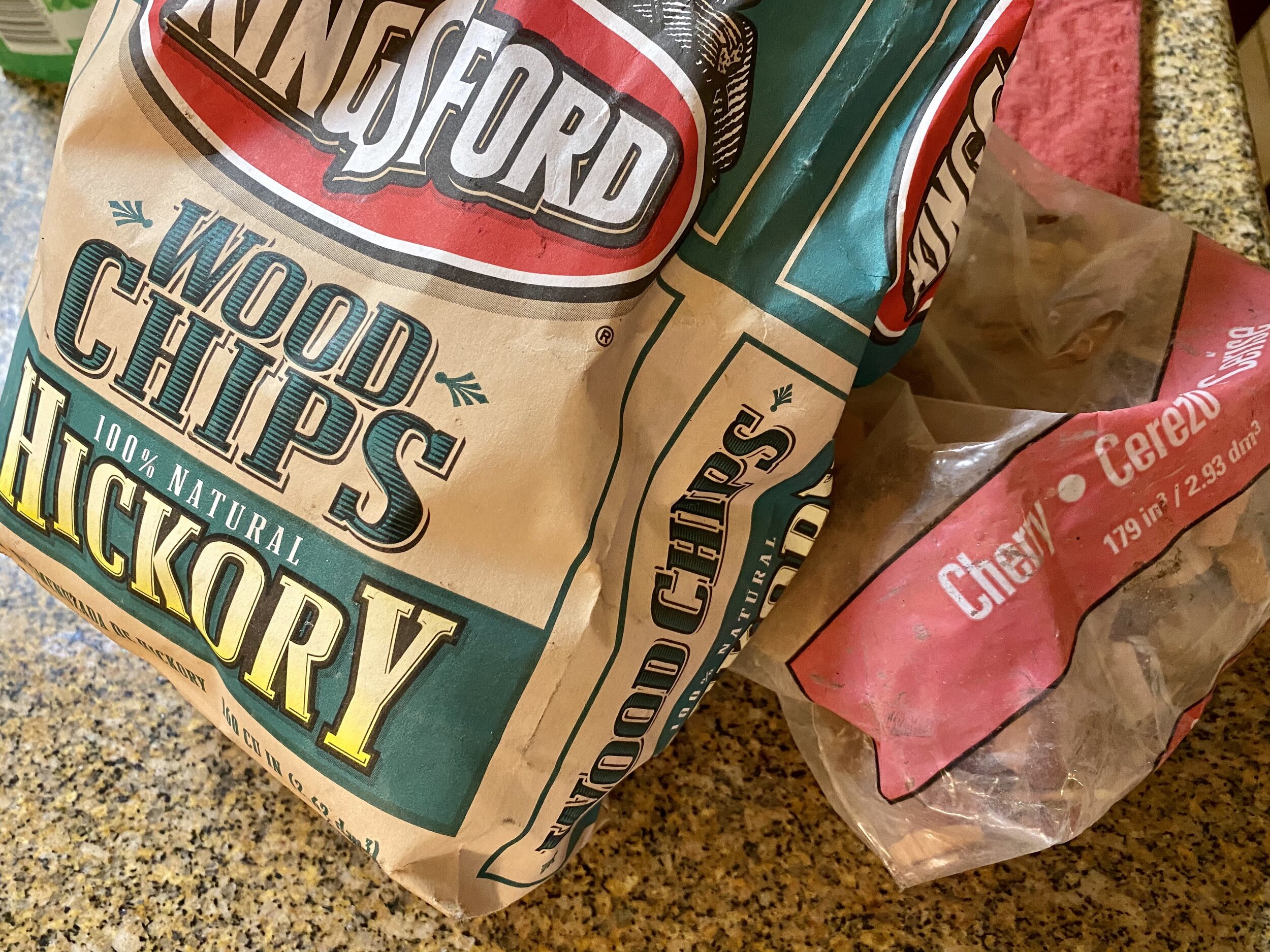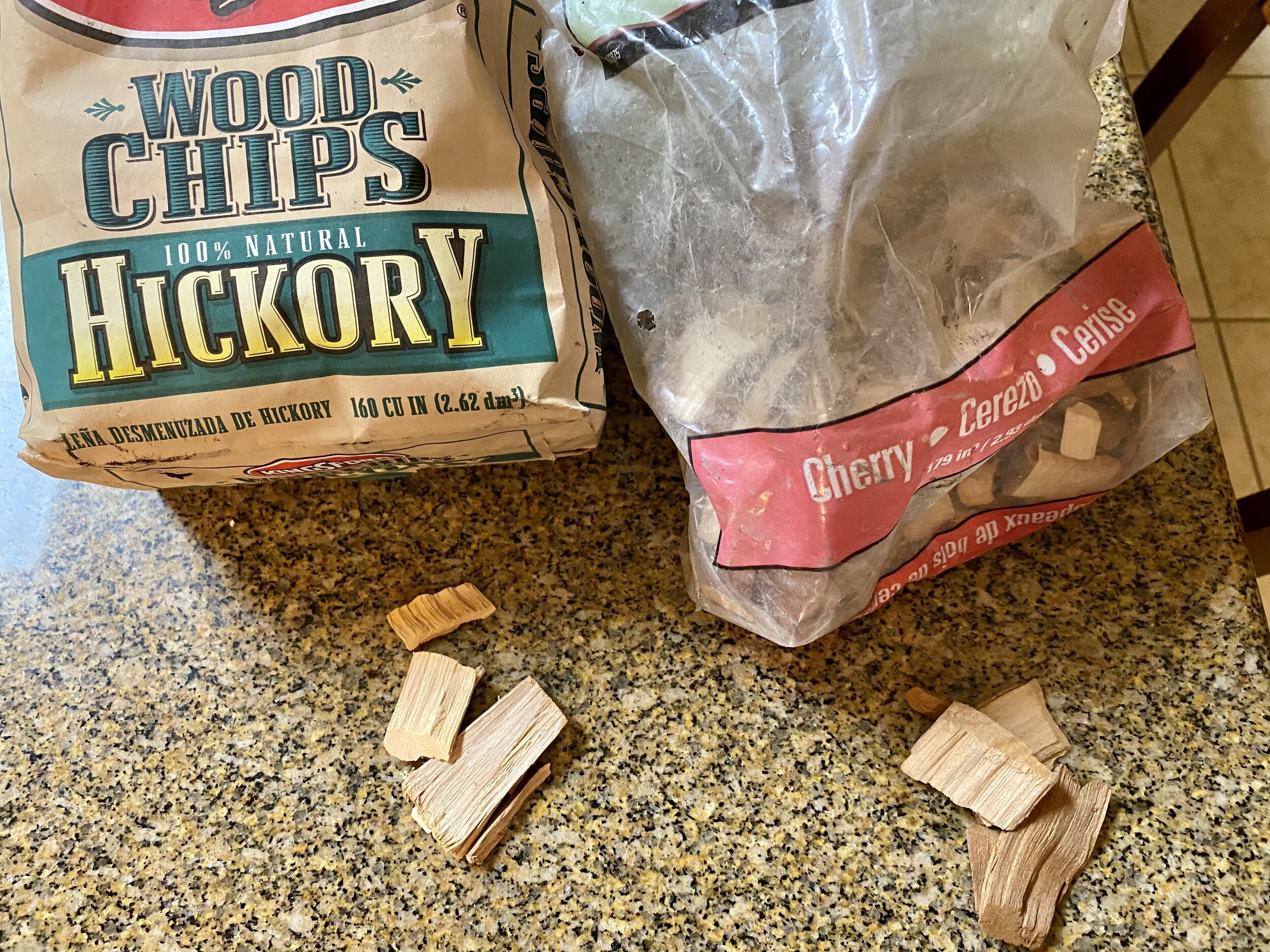Experimental BBQ
Can you taste different smoke?
We’ve speculated that you can smell the difference between say Hickory and Applewood smoke while your smoker is puffing away during a rib cook, but what about tasting the difference between those two woods? We recently recorded our show “Experimental BBQ” with Marshall from Brulosophy. Coming from the home brew world, i’ve enjoyed his “Exbeeriments” throughout the years debunking myths and challenging tradition and putting science to work to determine best practices. I was inspired to replicate some of Brulosophy’s spirit in our own craft of outdoor cooking. “Quelosophy” so to speak.
PURPOSE:
To evaluate whether or not smoke flavor is perceptible by taste.
METHOD:
Grilling the same cuts of meat with simplistic seasoning highlighting the wood smoke as the primary flavor and aromas.
RECIPE DETAILS:
Boneless Skinless Chicken Thighs
Dry brined with kosher salt for 6hrs
Refrigerate until cooking
Seasoned lightly with Big Poppa Smokers Money Rub and cracked black pepper
Reverse sear until cooked to 165 degrees internal temperature.
I set up my standard Weber 22” kettle for two zone cooking. Creating a fire on one side for a direct sear and an empty “cool” side for indirect cooking. I used Kingsford briquettes AKA “Blue-bag” for this experiment as they are the cleanest burning charcoal i’ve found.
For the variables, I chose to use two different woods and a control with nothing but blue-bag charcoal. The woods I chose were traditionally strong tasting hickory and a milder cherry wood chips.
I started by cooking the control samples by putting the chicken thighs on the indirect side of the grill and setting a timer for 10 minutes. This would do the majority of the cooking and ensure that they would be done after searing and require no additional cooking. At the conclusion of the timer I moved them directly over the fire and set a 2 minute timer on each side to provide a good sear. I measured the temperature of the thickest part of the chicken thigh and made sure they were over 165 degrees for a safe to eat temperature. I set the samples aside on a plate to rest.
The next samples were cooked identically but with either hickory or cherry wood chips. For this part of the experiment I added the same number and approximate size of wood chips during the indirect cooking portion. I let the wood catch fire and then closed the lid for the first charge of smoke. After the 10 minute timer was complete I added a second charge of wood chips for the direct cook. I let them catch fire and then moved the chicken thighs over the wood for the direct fire 2 minutes. I then flipped the chicken and seared the other side for 2 minutes. Finally I repeated this process for the last wood type and let them all rest.
I cut the chicken into bite sized strips and bagged them in sandwich bags labeling them:
A - Cherry Wood
B - Control (No Wood)
C - Hickory Wood
I delivered these to our hosts (Jay and Marshall) and would have them do a taste test blind not knowing the variables.
RESULTS!:
We went around tasting the samples in order of A, B, & C. Talking through the aroma and flavor of each sample. I recorded the notes below. For an in-depth review checkout our podcast Experimental BBQ!
Tasting Notes:
Sample A (Cherry Wood)
Jay Comments:
“Possibly just salt and pepper”
“Simply prepared”
“Charred flavor prominent”
Marshall Comments:
“Barrel character”
“Aged wood”
“Was this smoked?”
Sample B (No Wood Smoke)
Jay Comments:
“Not as flavorful as sample A”
“Sweeter”
“Scallop sweet”
“Buttery”
Marshall Comments:
“Sweet”
“Acidic”
“Absence of something in Sample A”
Sample C (Hickory Wood)
Jay Comments:
“Meat texture makes hard to taste difference”
“Perception is drier meat”
“Biting a piece of wood”
Marshall Comments:
“Aroma difference than others”
“Tastes like smoked chicken thigh”
“Delectable smokiness”
DISCUSSION:
The hosts preferred A and B but it was close. They did perceive differences between all three samples and in some cases correctly identified some of the flavor characteristics that are traditionally associated with the wood I used. For example, Marshall use the term “Barrel character” I know what he means by this, it is a distinct subtle wood characteristic in beer when aged in a charred barrel. Cherry wood is often described as a subtle wood, as are most fruit woods. Jay noted “simply prepared.” I chalk this up to eating smoked meat as often as he does. This probably tasted very normal to him. It makes more sense that he describes the Cherry wood sample that way because when he tries the sample that is just cooked on simple briquettes he says the meat is sweeter, i’d attribute this to the rub flavor which does contain some sugar in it and to me it is fairly noticeable. Marshall also nails it in commenting that the sample is missing something that is in the cherry wood sample. He would be correct, it’s missing the wood smoke. I did really enjoy listening to Jay proclaim that sample B with no wood smoke was his favorite. For as much ego he has regarding plain Kingsford charcoal it seemed to be pretty good to him. The last sample was very accurately described as a “smoked piece of chicken” by Marshall and Jay said it was like “biting a piece of wood.” The flavor and aroma of hickory has been described by some as being intense. If used improperly (I may have over smoked some of the samples) it can be overwhelmingly smoky. Dry tasting. I believe both hosts picked this up as well.
FINAL THOUGHTS:
To me, when I tasted these I knew what I was tasting but I did take some notes. I thought the cherry wood was slightly sweet tasting and interestingly smoky. The smoke was very subtle though. The blue-bag sample B was sweet tasting, I would agree with the hosts in their comments. There was nothing to hide or subdue the strong flavor of the BBQ rub. Perhaps if I were to do this again i’d forego the BBQ rub entirely and just do a dry brine with some black pepper. I thought C was no different than A, I had the luxury of trying them back to back and I think I was experiencing slight palette fatigue by then.
CONCLUSION:
Based on the tasting notes from our blind tests I believe smoke flavor is perceptibly different but like Jay mentioned, the type of smoke was difficult to identify. It wasn’t obvious to the hosts that this was the variable. I think with some more testing and possibly knowing the variable you might be able to guess the correct wood variety but you’d be hard pressed to know which one based on blind taste alone.
What do you think of this experiment? Comment below!




